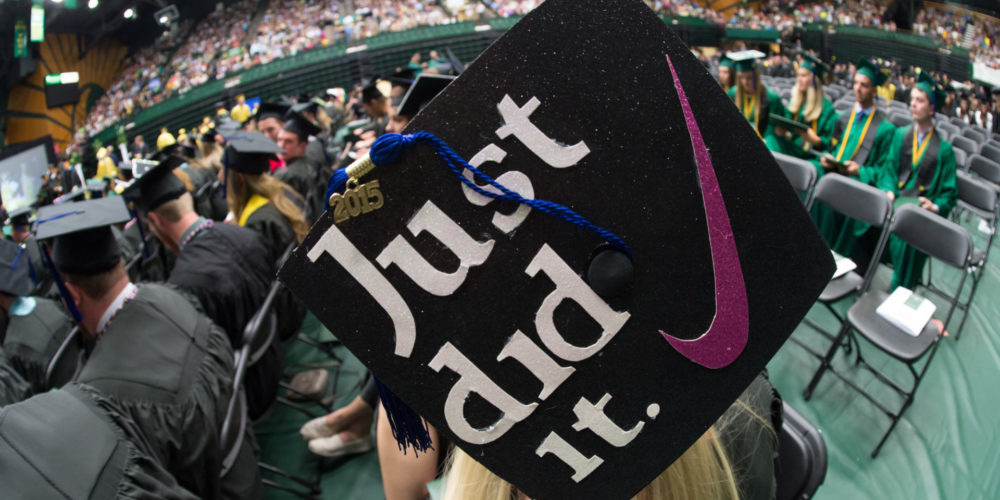
When Colorado State University President Tony Frank announced in his 2011 Fall Address that the campus should raise its six-year graduation rate to 80 percent, there was a collective gulp among the cadre of CSU leaders who had worked so hard to get that figure up closer to 70 percent.
Especially since the average for institutions like CSU is estimated at about 62 percent.
“We had no idea,” laughs Vice President for Student Affairs Blanche Hughes. “I remember looking at my colleagues, and we all had this look of terror. ‘Is he serious?’ We really had to up our game.”
“One of the great privileges of being president of an institution like this is that you can get up on any podium and say something and everybody thinks they have to do it,” Frank says with a smile. “After the address, some of the people who had been working so hard for the past five years stopped by my office and said, ‘So this 80 percent – any ideas on what we do next?’
“I knew we had been making great progress toward our original goals, and that 80 percent was a huge stretch goal,” he continues. “But I’d rather set a big stretch goal, and miss it by a bit but still make incredible progress in striving toward it, than set smaller incremental goals and perhaps still not attain our larger institutional goals.”
Multi-pronged effort
Hitting that 80 percent — as well as reaching other 2020 goals like a 60 percent four-year graduation rate (it’s 38 percent among comparable peers) and completely eliminating “gaps” in graduation rates for groups like first-generation students, low-income students and students of color — will take a multi-pronged effort that has become the hallmark of the Student Success Initiative, or SSI.
While much still depends on budget allocations and the recommendations of the Provost’s Advisory Committee on Student Success, the second phase of the initiative, dubbed “SSI 2,” will likely require CSU to at least continue what has been working so far. That includes getting more undergraduates involved in high-impact co-curricular practices, including research with faculty, outreach activities and internships; expanding the number of Key Communities; and taking full advantage of CSU’s 70 Academic Success Coordinators, according to Paul Thayer, special assistant to the provost and emeritus associate vice president for student success.
“We’ve been doing a much better job recognizing when students are experiencing difficulty and reacting in a caring and proactive way to provide support,” he says.
You can read more about the success of the Student Success Initiative in the Spring 2017 issue of CSU Magazine, available by mail and online in early June.
But SSI 2 will also mean focusing on some new areas, Thayer adds, like paying more attention to students’ transition to years three and four (so far, most emphasis has been on year one and the move to year two at CSU) and helping faculty give feedback to students sooner in their courses.
Telling students how they’re doing early in the semester, while they’re still getting used to a new course environment — even if they’re not struggling at all — will have a positive effect on retention.
“Early feedback makes an important difference, especially for freshmen, to stay in the class and stay enrolled at the University,” says Vice Provost for Undergraduate Affairs Kelly Long. “The next steps of SSI will involve our faculty in understanding how much their classroom practice can be used to encourage students to become more capable learners across the curriculum. We hope the faculty see themselves as part of something larger than the individual classes they teach.”
Everyone’s involved
Reaching the next round of goals will also require continuing to involve every unit on campus.
“No single person is driving these,” Thayer says. “We’ve got so many people, so many divisions involved.”
“I can’t think of a group that stands outside this initiative,” Long adds. “That’s exciting.”
Indeed, much of the continuing success of SSI depends on all CSU employees embracing their role as educators.
“I think the initiative has been a really well-kept secret, and it can’t be a secret anymore,” Hughes says. “Everyone needs to be on board. We don’t want students to leave saying, ‘Nobody reached out to me.’ All of us — staff, faculty and administrators — play a big role in the success of our students.”